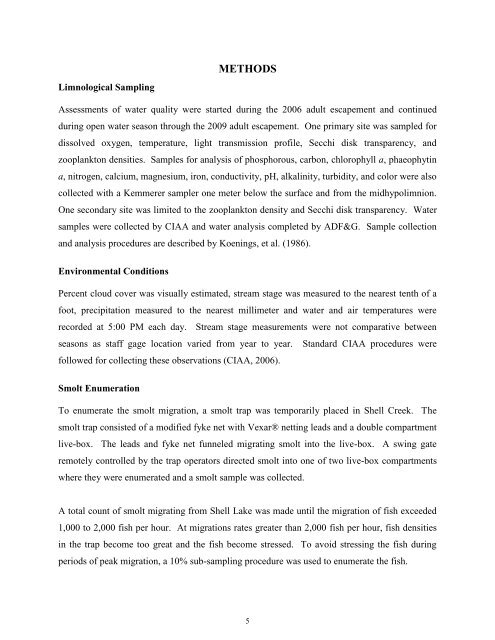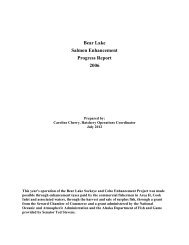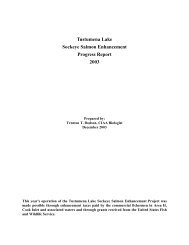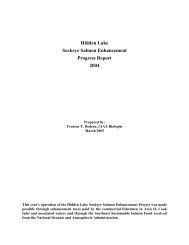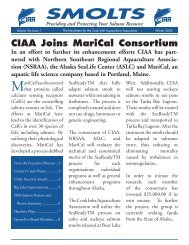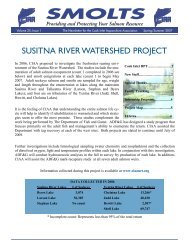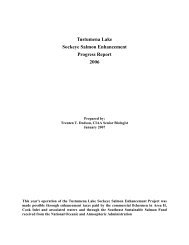Chenik Lake - Cook Inlet Aquaculture Association, Kenai, Alaska
Chenik Lake - Cook Inlet Aquaculture Association, Kenai, Alaska
Chenik Lake - Cook Inlet Aquaculture Association, Kenai, Alaska
Create successful ePaper yourself
Turn your PDF publications into a flip-book with our unique Google optimized e-Paper software.
Limnological Sampling<br />
METHODS<br />
Assessments of water quality were started during the 2006 adult escapement and continued<br />
during open water season through the 2009 adult escapement. One primary site was sampled for<br />
dissolved oxygen, temperature, light transmission profile, Secchi disk transparency, and<br />
zooplankton densities. Samples for analysis of phosphorous, carbon, chlorophyll a, phaeophytin<br />
a, nitrogen, calcium, magnesium, iron, conductivity, pH, alkalinity, turbidity, and color were also<br />
collected with a Kemmerer sampler one meter below the surface and from the midhypolimnion.<br />
One secondary site was limited to the zooplankton density and Secchi disk transparency. Water<br />
samples were collected by CIAA and water analysis completed by ADF&G. Sample collection<br />
and analysis procedures are described by Koenings, et al. (1986).<br />
Environmental Conditions<br />
Percent cloud cover was visually estimated, stream stage was measured to the nearest tenth of a<br />
foot, precipitation measured to the nearest millimeter and water and air temperatures were<br />
recorded at 5:00 PM each day. Stream stage measurements were not comparative between<br />
seasons as staff gage location varied from year to year. Standard CIAA procedures were<br />
followed for collecting these observations (CIAA, 2006).<br />
Smolt Enumeration<br />
To enumerate the smolt migration, a smolt trap was temporarily placed in Shell Creek. The<br />
smolt trap consisted of a modified fyke net with Vexar® netting leads and a double compartment<br />
live-box. The leads and fyke net funneled migrating smolt into the live-box. A swing gate<br />
remotely controlled by the trap operators directed smolt into one of two live-box compartments<br />
where they were enumerated and a smolt sample was collected.<br />
A total count of smolt migrating from Shell <strong>Lake</strong> was made until the migration of fish exceeded<br />
1,000 to 2,000 fish per hour. At migrations rates greater than 2,000 fish per hour, fish densities<br />
in the trap become too great and the fish become stressed. To avoid stressing the fish during<br />
periods of peak migration, a 10% sub-sampling procedure was used to enumerate the fish.<br />
5


